METTL3 promotes prostatic hyperplasia by regulating PTEN expression in an m6A-YTHDF2-dependent manner
- PMID: 35985997
- PMCID: PMC9391461
- DOI: 10.1038/s41419-022-05162-4
METTL3 promotes prostatic hyperplasia by regulating PTEN expression in an m6A-YTHDF2-dependent manner
Abstract
Uncontrolled epithelial cell proliferation in the prostate transition zone and the hyper-accumulation of mesenchymal-like cells derived from the epithelial-mesenchymal transition (EMT) of prostatic epithelium are two key processes in benign prostatic hyperplasia (BPH). m6A RNA modification affects multiple cellular processes, including cell proliferation, apoptosis, and differentiation. In this study, the aberrant up-regulation of methylase METTL3 in BPH samples suggests its potential role in BPH development. Elevated m6A modification in the prostate of the BPH rat was partially reduced by METTL3 knockdown. METTL3 knockdown also partially reduced the prostatic epithelial thickness and prostate weight, significantly improved the histological features of the prostate, inhibited epithelial proliferation and EMT, and promoted apoptosis. In vitro, METTL3 knockdown decreased TGF-β-stimulated BPH-1 cell proliferation, m6A modification, and EMT, whereas promoted cell apoptosis. METTL3 increased the m6A modification of PTEN and inhibited its expression through the reading protein YTHDF2. PTEN knockdown aggravated the molecular, cellular, and pathological alterations in the prostate of BPH rats and amplified TGF-β-induced changes in BPH-1 cells. More importantly, PTEN knockdown partially abolished the improving effects of METTL3 knockdown both in vivo and in vitro. In conclusion, the level of m6A modification is elevated in BPH; the METTL3/YTHDF2/PTEN axis disturbs the balance between epithelial proliferation and apoptosis, promotes EMT, and accelerates BPH development in an m6A modification-related manner.
© 2022. The Author(s).
Conflict of interest statement
The authors declare no competing interests.
Figures
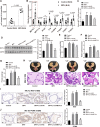
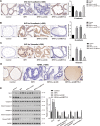
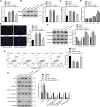
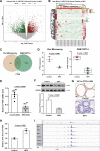
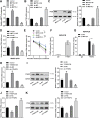



Similar articles
-
MIR663AHG as a competitive endogenous RNA regulating TGF-β-induced epithelial proliferation and epithelial-mesenchymal transition in benign prostate hyperplasia.J Biochem Mol Toxicol. 2023 Sep;37(9):e23391. doi: 10.1002/jbt.23391. Epub 2023 Jul 30. J Biochem Mol Toxicol. 2023. PMID: 37518988
-
miR-1202 regulates BPH-1 cell proliferation, apoptosis, and epithelial-to-mesenchymal transition through targeting HMGCL.Acta Biochim Biophys Sin (Shanghai). 2024 May 25;56(5):675-687. doi: 10.3724/abbs.2024001. Acta Biochim Biophys Sin (Shanghai). 2024. PMID: 38551020 Free PMC article.
-
The m6A methyltransferase METTL3 promotes hypoxic pulmonary arterial hypertension.Life Sci. 2021 Jun 1;274:119366. doi: 10.1016/j.lfs.2021.119366. Epub 2021 Mar 16. Life Sci. 2021. PMID: 33741419
-
Exploring TGF-β signaling in benign prostatic hyperplasia: from cellular senescence to fibrosis and therapeutic implications.Biogerontology. 2025 Mar 30;26(2):79. doi: 10.1007/s10522-025-10226-x. Biogerontology. 2025. PMID: 40159577 Review.
-
The Emerging Role of Cell Adhesion Molecules on Benign Prostatic Hyperplasia.Int J Mol Sci. 2023 Feb 2;24(3):2870. doi: 10.3390/ijms24032870. Int J Mol Sci. 2023. PMID: 36769190 Free PMC article. Review.
Cited by
-
Stabilization of RRBP1 mRNA via an m6A-dependent manner in prostate cancer constitutes a therapeutic vulnerability amenable to small-peptide inhibition of METTL3.Cell Mol Life Sci. 2024 Oct 5;81(1):414. doi: 10.1007/s00018-024-05418-6. Cell Mol Life Sci. 2024. PMID: 39367907 Free PMC article.
-
Chondroprotective effects of bone marrow mesenchymal stem cell-derived exosomes in osteoarthritis.J Bioenerg Biomembr. 2024 Feb;56(1):31-44. doi: 10.1007/s10863-023-09991-6. Epub 2023 Nov 28. J Bioenerg Biomembr. 2024. PMID: 38012335
-
Non-coding RNA methylation modifications in hepatocellular carcinoma: interactions and potential implications.Cell Commun Signal. 2023 Dec 18;21(1):359. doi: 10.1186/s12964-023-01357-0. Cell Commun Signal. 2023. PMID: 38111040 Free PMC article. Review.
-
Hsa_circ_0007590/PTBP1 complex reprograms glucose metabolism by reducing the stability of m6A-modified PTEN mRNA in pancreatic ductal adenocarcinoma.Cancer Gene Ther. 2024 Jul;31(7):1090-1102. doi: 10.1038/s41417-024-00786-4. Epub 2024 May 27. Cancer Gene Ther. 2024. PMID: 38802551
-
Methyltransferase-like proteins in cancer biology and potential therapeutic targeting.J Hematol Oncol. 2023 Aug 2;16(1):89. doi: 10.1186/s13045-023-01477-7. J Hematol Oncol. 2023. PMID: 37533128 Free PMC article. Review.
References
Publication types
MeSH terms
Substances
LinkOut - more resources
Full Text Sources
Medical
Research Materials

